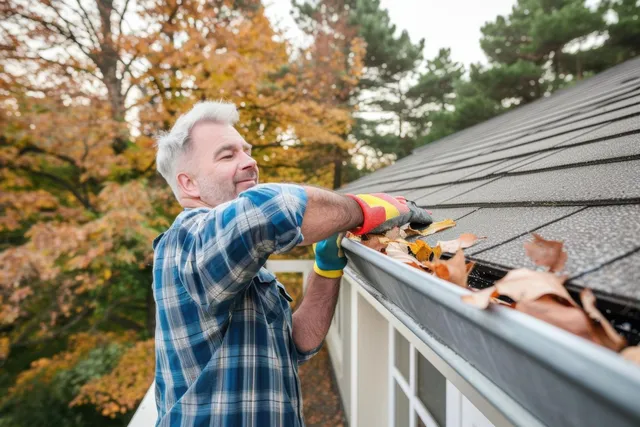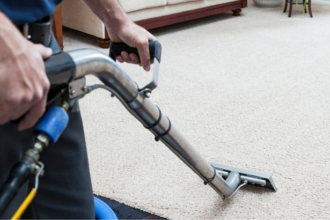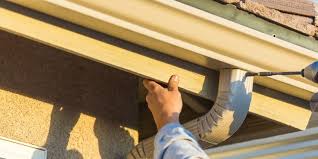Gutters are an essential part of your home’s water management system, notes leading property management Alpharetta GA, Vineyard Property. They direct rainwater away from your roof and foundation, preventing erosion, flooding, and other water-related issues. But like any part of your home’s infrastructure, gutters are subject to wear and tear, especially when exposed to harsh weather conditions over time. Whether due to clogged debris, corrosion, or physical damage, gutters can malfunction. That’s when Gutter Repair becomes crucial to maintaining the integrity of your home.
This article explores why timely gutter repair is essential, signs that your gutters need attention, common types of repairs, and when it’s best to seek professional help.
Why Gutter Repair Is Essential
Gutters perform a simple but vital job: they direct rainwater from the roof, away from the building’s foundation, walls, and landscaping. When gutters fail, water can pool around the foundation, leading to significant structural damage, basement flooding, and soil erosion. Over time, even small leaks can compromise the structural integrity of your home and lead to mold and mildew growth.
Additionally, a clogged or broken gutter system can cause damage to your home’s siding, fascia boards, and roofing materials. Therefore, Gutter Repair is more than just a cosmetic fix—it’s a preventative measure against costly water damage and the long-term degradation of your home.
Signs Your Gutters Need Repair
While gutters can last for many years with proper care, they are susceptible to wear and tear due to weather, debris accumulation, and aging. Here are some signs that indicate it’s time to consider Gutter Repair:
1. Water Damage or Staining on the Siding
If you notice water stains or damage along the side of your home, it could indicate that the gutters aren’t properly diverting water away. Water should flow through the downspouts, not spill over the edges of the gutters. This could be due to a clog or improper installation, causing water to leak down the sides of your home.
2. Pooling Water Around the Foundation
One of the most significant risks of damaged gutters is that water will accumulate around your foundation. If you see pooling water near the base of your home or in your basement, it’s a clear sign that your gutters aren’t performing their function.
3. Sagging or Detaching Gutters
Gutters that sag or appear to be detaching from your home are no longer doing their job. This could be caused by corrosion, debris buildup, or a structural issue with the gutter hangers. A sagging gutter will allow water to flow unevenly, increasing the risk of water damage.
4. Visible Holes or Cracks
If your gutters have visible holes, cracks, or rust spots, they are likely leaking water. Even small leaks can result in long-term damage to your home. It’s important to address these issues quickly with Gutter Repair to prevent further deterioration.
5. Clogging Debris
Debris such as leaves, twigs, and dirt can build up in your gutters over time, especially during the fall months. Clogs can prevent water from flowing through the system properly, causing water to spill over and potentially damaging your roof, siding, or foundation.
6. Pest Infestations
Clogged or stagnant water in gutters can create an ideal environment for pests, such as mosquitoes, rodents, or insects. If you notice an increase in pests around your gutters, it’s a sign that you need to clean and repair the system.
Common Gutter Repairs
Gutter systems can suffer from a variety of issues that require different types of repairs. Below are some of the most common Gutter Repair scenarios:
1. Resealing Seams
Gutters are often constructed in sections that are sealed together. Over time, these seams can wear out or leak. Resealing these seams with a high-quality waterproof sealant can stop leaks and ensure that your gutters function properly. This is a simple fix for small leaks but should be done by a professional for the best results.
2. Replacing Sections of Gutter
If a section of your gutter is severely damaged or rusted through, it may need to be completely replaced. This can be due to age, corrosion, or physical damage. A professional will carefully remove the damaged section and replace it with a new one to ensure proper drainage.
3. Fixing or Replacing Hangers
The hangers that secure your gutters to the fascia board can become loose or damaged over time. If this happens, the gutters may sag or detach from the roofline. Replacing or tightening the hangers is a necessary repair to ensure that the gutters are securely fastened.
4. Unclogging Gutters
Sometimes, all your gutters need is a good cleaning. Debris buildup, such as leaves, twigs, and dirt, can block the flow of water. This can cause water to overflow or pool in certain areas. A thorough cleaning can clear out these blockages and restore your gutters’ function.
5. Fixing Leaks in Downspouts
Leaking downspouts can cause water to flow incorrectly, resulting in water damage to the walls or foundation. If there are any leaks, they should be sealed immediately to prevent water from seeping into the building’s structure.
6. Re-sloping the Gutter System
Gutters are designed with a slight slope toward the downspout to encourage water to flow naturally. Over time, this slope can become uneven due to sagging or settling. If water isn’t draining correctly, it may be necessary to adjust the slope of the gutters to ensure optimal water flow.
When to Call a Professional for Gutter Repair
While some homeowners may choose to perform simple gutter repairs themselves, it’s often best to hire a professional to ensure the job is done correctly and safely. Here are a few situations where calling a professional for Gutter Repair is recommended:
- Safety Concerns: Working on gutters can be dangerous, especially if you’re using ladders or working at height. Professionals are trained in proper safety procedures and have the necessary equipment to do the job safely.
- Severe Damage: If the damage is extensive, such as large holes, rusted sections, or sagging gutters, a professional will be able to assess the situation and determine the best course of action.
- Complex Problems: If your gutters are clogged with stubborn debris or have multiple issues, a professional will have the experience and tools to handle the problem efficiently.
- Lack of Time: If you’re busy and need a quick resolution, professionals can often complete repairs much faster than a DIY approach.
Hiring a professional ensures the repair is done correctly, minimizing the risk of further damage down the line.
DIY Gutter Repair Tips
For those who are comfortable with basic home maintenance, here are a few DIY Gutter Repair tips to help maintain your system:
1. Clean Your Gutters Regularly
Make a habit of cleaning your gutters at least twice a year, more frequently during fall. Removing leaves and debris prevents clogs and ensures that water can flow freely.
2. Inspect for Damage
After cleaning, take a few moments to inspect your gutters for any visible damage. Look for cracks, holes, rust, or areas that need resealing. Catching small issues early can prevent them from becoming more serious.
3. Use a Gutter Sealant
If you notice small leaks, you can apply a high-quality gutter sealant to the seams or cracks to stop the leaks temporarily. This is a quick fix, but more significant repairs may require professional help.
4. Install Gutter Guards
Gutter guards or screens can help prevent leaves and debris from clogging your gutters. While they won’t eliminate the need for occasional cleaning, they can significantly reduce the amount of debris that accumulates, making your maintenance routine easier.
Preventative Measures for Gutter Health
The best way to avoid costly gutter repairs is to prevent issues before they arise. Here are a few tips to extend the life of your gutters:
- Trim Trees Near Your Roof: Overhanging branches can drop debris into your gutters, leading to blockages. Regularly trim any trees or shrubs close to your roof.
- Install Downspout Extensions: Downspout extensions help direct water away from the foundation, preventing pooling and erosion around the base of your home.
- Inspect After Storms: After heavy rainfall or storms, inspect your gutters for damage or debris buildup. This allows you to catch issues early before they cause bigger problems.
Conclusion
Timely Gutter Repair is essential to protecting your home from the long-term effects of water damage. Whether it’s cleaning debris, sealing leaks, or replacing damaged sections, addressing gutter issues promptly can save you from costly repairs down the line. Regular maintenance and periodic inspections will ensure your gutter system remains in optimal condition, protecting your home, landscaping, and foundation from the damaging effects of rainwater.
By understanding the common signs of gutter issues and when to seek professional help, you can keep your home safe, dry, and structurally sound for years to come.

















